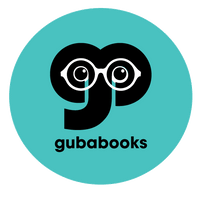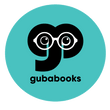How My Kid Passed a Bangla Exam in California
Raya Rahman, Oakland, California
When my daughter was born, the first words she heard were endearing expressions in Bangla. Looking through old videos of us, I simultaneously smile (at cute baby-Inara) and cringe at the sound of my sing-songy, high-pitched voice saying, “amar jaaner tukra!” or “kothay amar shona manik?” to her. Did you know that this way of speaking to babies is called ‘motherese’? It’s nearly universal in human cultures and is characterized by a higher pitch in your voice and a more musical rhythm and tone. Though I sounded funny in those old recordings, the Bangla expressions I used, meaning “you’re a piece of my soul!” and “where is my precious jem?”, had been affectionately spoken to me by my mom when I was a baby, and by generations of moms before her to their babies. I suppose that’s why a person’s first language is called ‘The Mother Tongue’.
With baby Inara in Vancouver, Canada, where she was born.
Bilingual parents will all attest to one thing - the start is easy. A baby will accept whatever language you speak. The adorable little ‘sponges’ can absorb anything you throw their way, learning multiple languages even. But what no one prepares you for is a phenomenon known as first-language attrition. It’s the process of forgetting a first or native language that comes about because two languages are fighting it out in one brain. So, as baby Inara grew up and started daycare and then preschool in Canada, English became the dominant language in her brain and Bangla, the first language she understood and spoke, faded more and more from her life until she lost it entirely at the start of elementary school.
The chatty kindergartener (English only!)
This episode in our lives, when my first-born child lost her mother tongue, triggered a dramatic chain of events for me and my family. Over the next decade, I would undertake a career change, start my own business, and even make a move to Bangladesh with my children. I equated her loss of language with loss of identity and a diminished sense of belonging, and it made me spring into action in all sorts of unexpected ways.
Here's what I tried, and didn't try, during the long and ambitious quest to make my child bilingual.
One Parent One Language (OPOL)
Some parents swear by this multilingual parenting strategy where each parent exclusively speaks only one language to the child, but I ended up skipping this method entirely.
I figured that the parent who only spoke Bangla (the minority language) would get the potentially harder parenting job, making it unsustainable for our family in the long run. Also, being a first-time mom with a lot on my plate, I prioritized easy communication over all else.
Engaging Media
I went all out on this one. I’ve always loved books, film, comics, and beautifully created visual media, so when I couldn’t find a lot of engaging content for kids in Bangla, it sparked an unstoppable desire to create them myself.
Initial sketches of Guba’s Bengali Alphabet flashcards
It all started with making some cute Bengali alphabet cards that evolved into an actual publishing business for bilingual children’s books (check out our blog on starting Guba Books here). Though there was a long gap when Inara did not actively learn any Bangla, it was ultimately Guba’s flashcards and alphabet poster that helped her to re-build the foundations of the language around age 9.
Learning the basics with Guba’s Bengali Alphabet poster
Online Tutoring
The Guba products had started off her learning with success, but to keep the momentum going, I enrolled my kids in an online tutoring service called Amar Vasha. The company had a fun learning model, matching tutors from Bangladesh with expat Bangladeshi kids. Their beloved teacher, Ms. Farha, who lived in Rajshahi, further enhanced their Bangla skills through online classes over the next three years.
Excited to get gifts from Ms. Farha when they finally meet in Bangladesh
Immersion
At the end of the pandemic, we even made a short move to Bangladesh. This was a real game changer in language acquisition. Suddenly, Inara’s world expanded beyond what her mom and tutor could teach, and the results were incredible! Our stint there had exposed her to a young and cool version of Bangla through friends, peers, and Dhaka’s underground artsy scene. She now had agency in her own Bangla learning journey, and it empowered her in ways I could never have imagined.
Rickshaw ride through the streets of Dhaka
The Journey Continues…
Inara is now a bilingual teenager going to school in California. She continues to practice her Bangla every day through podcasts, music and the occasional natok (Bangladeshi TV dramas). But recently, she surprised her mom with something wonderful. She took a grueling Bangla exam at her high school, something she chose as part of a language proficiency test and passed!
 At her High School (the sign says "I Passed" in Bangla)
At her High School (the sign says "I Passed" in Bangla)
This earned her a coveted language credit, an important requirement for graduation. All this time, I had thought that Bangla would help to connect her to her roots. Instead, my daughter showed me that it in fact paved a pathway for her future.




